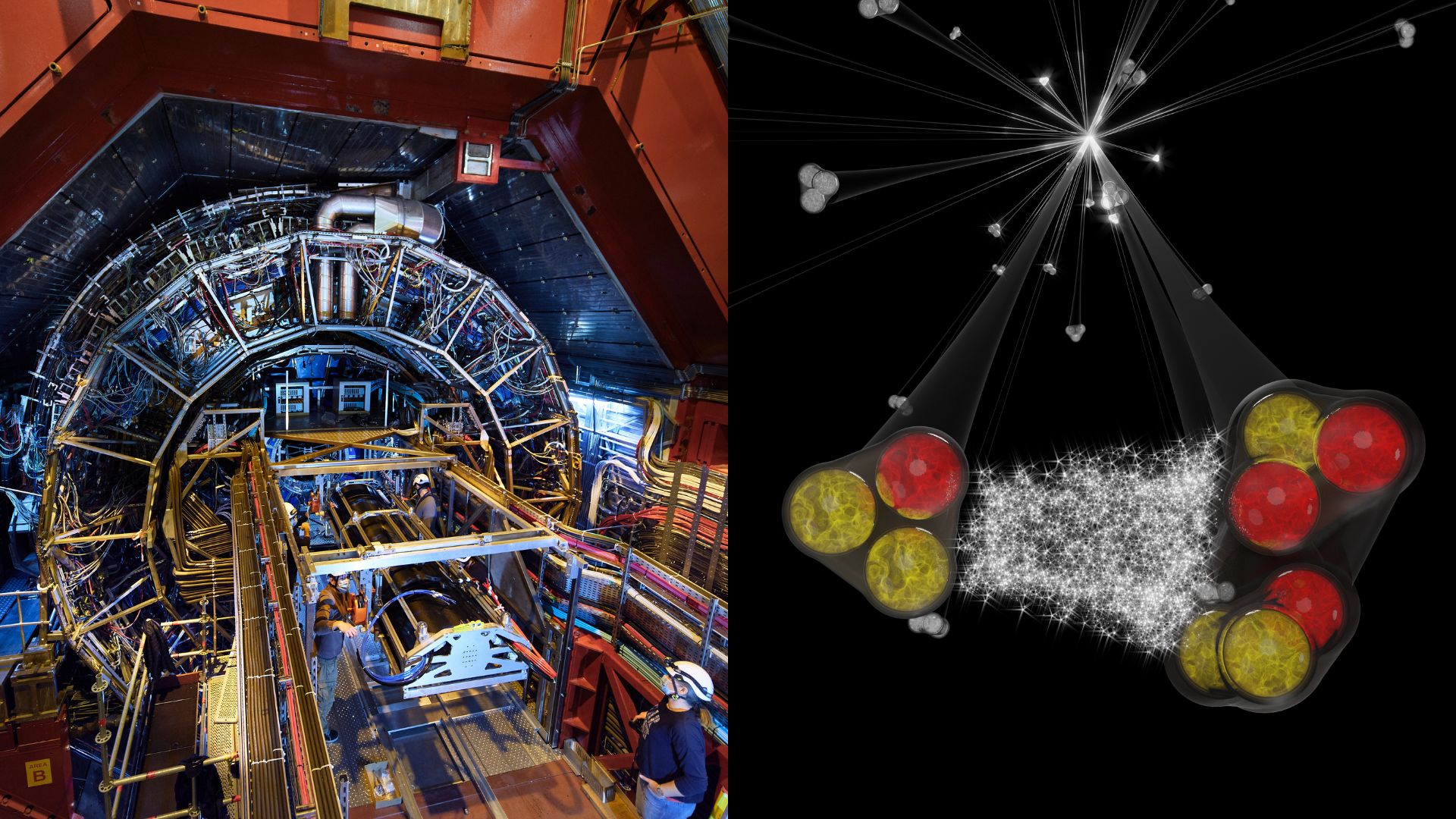
A fundamental force is usually described as an interaction between two bodies, i.e., the force between two bodies is assumed to be unaffected in any way by the presence of others nearby. But when we go from simple pairs to more complex systems, the description of the dynamics of this interaction becomes particularly elusive, especially from an experimental point of view. In a study recently published on Physical Review X, the ALICE experiment at CERN's LHC accelerator tested an innovative experimental method for investigating three-body nuclear systems, paving the way for the precise measurement of their interactions, with the possibility of including exotic particles.
The study focuses on correlations between deuterons and kaons, and between deuterons and protons, produced by high-energy proton-proton collisions at LHC. These collisions generate large numbers of particles which, emitted very close together, at distances of the order of 10-15 m (a femtometre), may be subject, in pairs, to effects due to quantum statistics, the Coulomb force, and their strong mutual interaction. However, some pairs, apparently consisting of two elements, conceal a three-body system, and therefore respond differently to short-range interactions. This is the case of pairs containing deuterons, which themselves consist of a proton and a neutron bound by strong interaction.
The ALICE collaboration applied the femtoscopy method to kaon-deuteron and proton-deuteron systems, measuring the correlation between the impulse of these particles when they are produced in the collision. The results obtained, in the case of kaon-deuteron correlation - two perfectly distinguishable particles - can be described using a two-body model, while in the case of proton-deuteron correlations, the internal structure of the deuteron (one proton and one neutron) complicates the dynamics, and a three-nucleon system must be considered to explain it.
In proton-proton collisions at the LHC, there is the possibility that particles emitted in relatively parallel directions, and which remain close together during motion, briefly interact before their trajectories separate. This possibility allows forces even between very exotic particles to be studied. In recent years, the femtoscopy method has been used by ALICE to study strong interaction between pairs of particles that were not accessible by traditional methods. Now, the method has been extended to also analyse three-body dynamics.
The results of the ALICE experiment make it possible to extract valuable information on the interactions of kaons, hyperons and other unstable particles with nucleons, information that is very difficult to obtain in traditional scattering experiments. In the case of proton-deuteron correlation, the comparison between experimental data and theoretical calculations made it possible to examine coalescence (nucleon formation) patterns, and to evaluate the current knowledge of the interactions between two and three nucleons. Indeed, the particular sensitivity of the proton-deuteron correlation to the internal structure of the deuteron makes it possible to evaluate effects of the three-nucleon force, one of the least-known elements of nuclear interaction, which is currently the subject of intensive studies.
The synergy between the experimental physicists at the ALICE experiment, and in particular the INFN colleagues from Frascati who carried out this study, and the theoretical group at INFN in Pisa, which was responsible for the calculations, was essential in achieving these results.
The results of this work represent a significant step forward in the investigation of complex phenomena such as the structure of nuclei, the properties of dense nuclear matter, and the composition of neutron star cores. The method inaugurated with this work could allow the direct study of three-body forces in systems with strange quarks and charms, unstable particles produced in great quantity in nuclear collisions at the LHC, and believed to play a key role in the composition of neutron stars.




